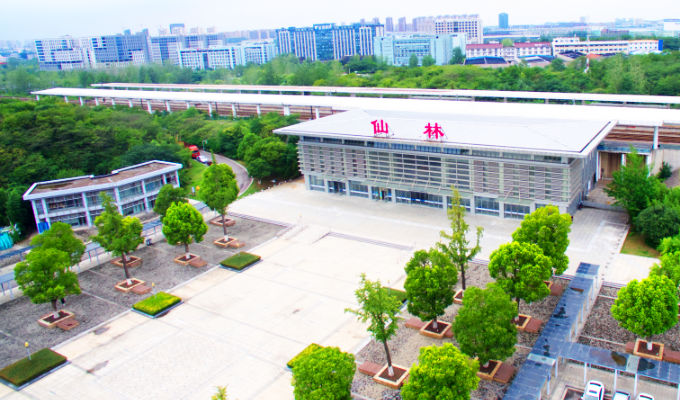China’s high-speed railway network, as we all know, is nothing short of a marvel. Yet, it is also not without criticisms. Among them, so-called “ghost stations” that, for one reason or another, see more trains pass through than stop by their empty platforms. Nanjing is home to not one, but two, even arguably three, such stations, built in the wrong place at the wrong time.
While many are familiar with the railway stations in Nanjing that played significant roles in the city’s history, Nanjing West Railway station and Pukou Railway Station in particular, more recently-constructed, supposed hubs for transportation have not captured the public’s attention, other than perhaps by way of complaint.
In an area of Nanjing that cannot decide wither it is residential or industrial, The Nanjinger only came across Jiangning Railway Station when lost on its way to a meeting. “Not many”, said the young man who greeted us, when quizzed as to the frequency of trains.
That fully 20 trains come and go at Jiangning Station each day is actually quite respectable. The same cannot be said for Jiangning West Railway Station; until this article was published, Google had never heard of it. With only nine trains daily, the siting of the station midway between Nanjing and Ma’anshan compromises accessibility, making it really only fit for use by residents of suburban satellite, Banqiao.
No wonder that in May of last year, the National Development and Reform Commission (NDRC), China’s economic planner, issued guidance on the “reasonable development” of high-speed rail stations and warned against building stations far from downtown areas.
Nevertheless, it would be fair to say that during the planning phase for the-now ghost stations, there would have been the justifiable expectation that they would attract high-traffic volumes to the area, encouraging investment into the local economy as well as, substantial real estate development.
Given that all China’s ghost stations were built during the initial high-speed railway project rollout, and before the charge of the country’s anti-corruption campaign of her incumbent leader, it remains possible that some were perhaps placed to benefit developers and the pockets of local officials, rather than the local community, if indeed there was one to begin with.
Certainly, it is fair to say that both Jianging and Jiangning West hardly provide the Railway Bureau with value for money. Yet, if you want to see waste in construction on a grand scale, it is not necessary to look any further than Qixia District, specifically Xianlin Railway Station. Here, just one train per day in each direction makes a stop. Having departed Nanjing Railway Station 10 minutes prior, the G7045 pulls into Xianlin at 09:38 am, to spend 2 minutes waiting, for presumably nobody, to then leave for Shanghai station. It doesn’t bother to come back. Instead, the G7110 makes its final stop in Xianlin at 14:44 on its way from Shanghai Hongqiao to Nanjing.
Outside Xianlin Railway Station, the landscaping is well tended, while a small fleet of electric rental mini cars and a Xiaomi shop await… no one.
The Shanghai-Nanjing line suffers a lot from the problem of ghost stations. As financial and business media group, Caixin, noted in an article last year, “Along the 301km intercity line between Shanghai and Nanjing there are 21 stations, with 10 more available for future use. As a result, three stations have only one pair of trains stopping daily”.
While there are plenty stations that serve nobody, so there are people in places without a station. Further from Xianlin towards Shanghai, the high-speed line passes by the China (Nanjing) AI Valley in Qixia District. Having gathered more than 200 AI enterprises and in excess of 4,000 R&D personnel in the AI field, the Valley is often lauded by authorities as being just 1 hour away from Shanghai by high-speed train. Incorrect. Nanjing is 1 hour away from Shanghai, and then only by travelling from Shanghai Hongqiao to Nanjing South Railway Station. From there, the China (Nanjing) AI Valley is then a full 1-hour drive.
The irony is that as the high-speed line to Shanghai blazes past the Valley, the sound of the trains interrupts conversation. After the noise abated, those working therein told The Nanjinger there are no plans for a high-speed station in the Valley.
Perhaps Rupert Bear summed it up best;
“I do not see the sense, of a gate without a fence”.









